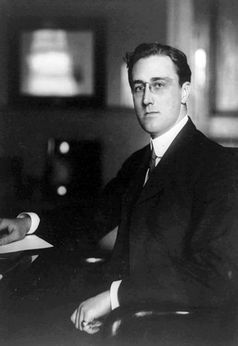|
J. William T. "Bill" Youngs, Eleanor Roosevelt: A Personal and Public Life, Chapter Five
|
"Eleanor and Children in Arizona, 1912", Courtesy of the Library of Congress
|
I looked at everything from the point of view of what I ought to do, rarely from the standpoint of what I wanted to do. ... So I took and interest in politics. It was a wife's duty to be interested in whatever interested her husband, whether it was politics, books, or a particular dish for dinner.
-Eleanor Roosevelt, This is My Story
-Eleanor Roosevelt, This is My Story
Chapter 5: A Politician's Wife |
SummaryEleanor gets used to life as the wife of a successful politician. She faces conflict with Franklin who wishes for more time together. She grows as a person and in her political thought. Franklin Roosevelt is elected to the legislature in New York, and is appointed as Assistant Secretary of the Navy, the same position Teddy Roosevelt held years earlier. His ambition becomes the driving force in Eleanor's life.
|
Author reads from the Text
Although Eleanor was intrigued, and sometimes disturbed, as the lessons of politics were revealed to her, she could not lose herself in Franklin's career. She began to realize that something within herself "craved to be an individual." And what did it mean to be an individual? Eleanor probably did not know. By her own later admission she was not "a feminist in those early days." She did not expect to be able to vote, and she was "shocked" when Franklin came out for women's suffrage. Eleanor had simply assumed "that men were superior creatures and knew more about politics than women did." She became a supporter of women's suffrage for the ironic reason that Franklin was for women suffrage so she "probably must be too."

